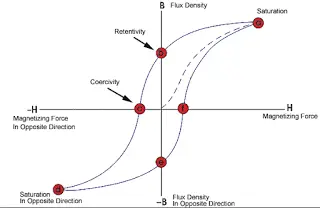Static Sensitivity
Contents
show
Static Sensitivity of an instrument or an instrumentation system is defined as the ratio of the magnitude of the output signal or response to the magnitude of an input signal or the quantity being measured.
The reciprocal of sensitivity is defined as inverse sensitivity or deflection factor.
The sensitivity of an instrument should be as high as possible.
Linearity
Linearity is the characteristics of instrument or measurement system, in which output is linearly proportional to the input.
Linearity makes the calibration or measurement easy. One easily can conclude about actual measurand by looking into instrument scale.
So, linearity is graphically represented as a straight line (a relationship between input and output). In many cases non-linearity leads to the error in measurement. The output-input characteristic is shown in figure-1 below.
 |
| Figure-1 |
Note: If a system or instrument is non-linear then it does not implies that it is inaccurate. A non-linear instrument may also be accurate. It depends upon the application where non-linearity is important.
It is very difficult to achieve perfect linearity. So it is desirable to keep non-linearity as small as possible as it would result in small errors.
Hysteresis
Hysteresis is basically dependence of the state of a system on its history. It is non-coincidence of loading and unloading whether it is an electrical or a mechanical system. Hysteresis is caused due to the fact that all the energy put into the stressed parts when loading isn’t recoverable upon loading.
For an instrument or system, when an input varies from zero to full scale and then back to zero, its output varies as shown figure-2 below. There are two outputs in hysteresis for increasing and decreasing the value of the input.
For example, a magnetic hysteresis is shown below. It is characteristics of flux density, B and magnetizing force, H.
 |
| Figure-2 |
Hysteresis can be found in engineering, physics, chemistry, biology and economics.
Exercise
Q. Explain hysteresis and backlash.
Q. Why we do not obtain the same output for both increasing and decreasing values of the input in hysteresis?

nicely eplained
eplained nicely with diagram